How-To: Flat Turns w/ Josh Green
Getting your bike around a flat turn might sound relatively easy, but it ain’t. AORC frontrunner, Josh Green, steps us through the finer points of going fast around flat turns at the home of the NSW-based Transmoto 6-Hour, Stroud’s Gunns Gully.
Josh Green is no stranger to rough terrain. But the 27-year-old also routinely practices his flat-corner technique – an area that riders often overlook. Here, Greeny steps us through what it takes to get through flat turns with maximum speed and efficiency.
On a typical ride, enduro pilots have plenty to worry about. They’ve got trees, roots, rocks, ruts, whoops, blind washouts and even stray wildlife. Motocross racers, on the other hand, tend to be more concerned with scrubbing jumps, navigating rutted sections of track or holding off a rider who’s breathing down their neck. The common element to both disciplines, however, is flat corners. As simple as a flat or off-camber turn may sound, it’s actually one of the most difficult to perfect. And as a result, riders routinely let their flat turn technique fall by the wayside – oblivious to the fact they can make up a lot of ground by practicing and refining it.
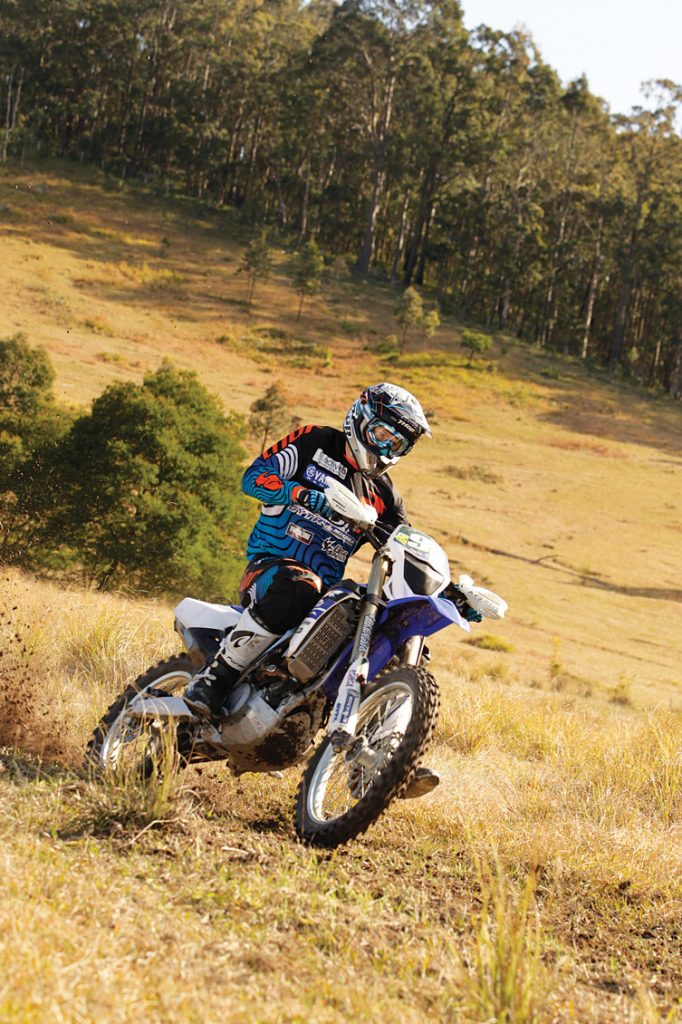
So, to get around flat turns faster and more efficiently, should you focus primarily on line selection, body position, or smooth use of your controls? Or all of the above? Well, Josh Green understands the importance of flat turns to his racing success, so we picked his brains for advice on the key aspects of both riding technique and bike set-up to help all riders improve their flat-terrain game. Take it away, Greeny…
Fundamentals
– Body Position & Controls Use –
Body position is the key for flat turns; if you can draw a parallel line with your wheels’ contact point with the ground and your body positioning, you are off to a good start. With a berm or rut, it’s important to lean with the bike a little to get the best traction. But with a flat turn – where there’s nothing to turn off – you will achieve much better grip and control when your upper body is straight up and down on the bike. To achieve this and to maximise the tyres’ ability to bite into the terrain, you need to be sitting right on the outer edge of the seat (effectively wedging the edge of the seat in your bum-crack) and applying pressure to the outside footpeg. Try to weight the front of the peg with your toe pointed down towards the ground, as this will translate into more traction than a neutral foot position. Ideally, you shouldn’t need to use the brakes once you are in the corner, and if you do use the clutch, it should only be to smooth out the power delivery.
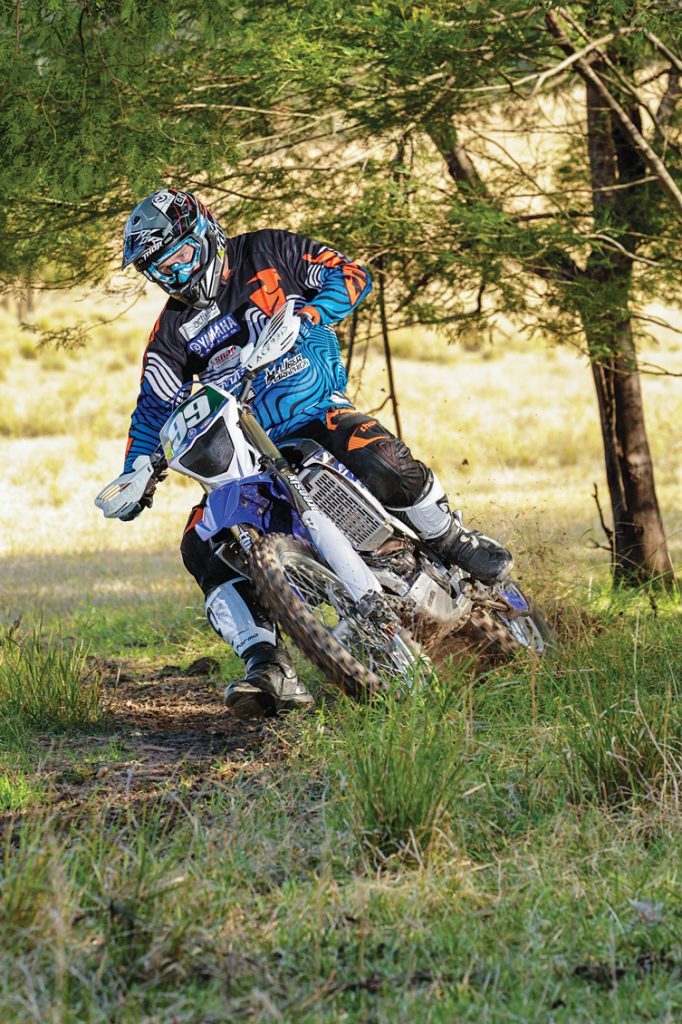
– Vision –
Looking ahead is incredibly important to all aspects of racing, but it’s often overlooked on what appears to be a simple flat corner. You need to have a clear plan of attack in your head well before the corner to assure a successful outcome. Line selection must be done well before braking begins as this’ll ensure you won’t make a rushed mid-corner decision. Keep an eye out for grassy sections or loamier dirt as the track changes throughout the day, because these will offer more traction for your rear wheel. Once braking is completed and the transition into the corner has begun, it is important to visualise your exit before rolling on the throttle. And once you are hard on the throttle, your vision should be focused on the next section of the track.
– Line Selection –
Many riders fall into the habit of following the main line through a flat corner, so breaking this habit alone can achieve significant improvements. If the main line is a little greasy, moving less than half-a-metre away from that line (which is exactly what I’ve done in the shot on this page, where I’m under the tree) can mean fewer braking bumps, greater traction and/or a better angle for a smoother exit. Hence the importance of vision, discussed above. It is important to continually search for grippier terrain, and don’t be afraid to square off a corner, or run a little wider if it allows you to carry greater speed and conserve energy.
Often, multiple entry lines will funnel into one at the apex of a flat corner, which can create a slick spot that you should try to avoid. Keep an eye out for – and take advantage of – small ruts or any ‘mini-berms’ for more lateral traction. These will allow you to carry more momentum through the mid-corner or drive a little harder off the corner.
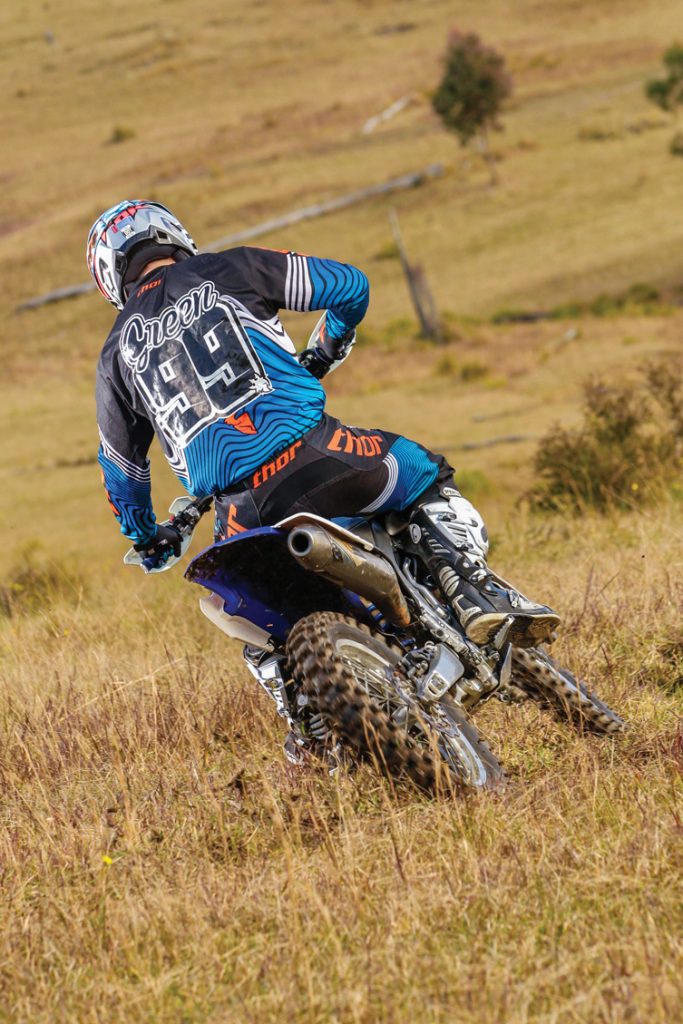
ENTRY & MID-POINT
– Braking with Control –
Braking should be done in a straight line prior to the corner entry. You want to be standing up, with your weight slightly towards the rear of the bike as this allows the bike’s suspension to work underneath you as braking bumps form. Pushing your weight through the rear of the footpegs will also force your bike into the ground, creating traction for braking. Gripping tightly with your lower legs and knees will keep you in full control of the bike through any square-edged bumps, and give you the best chance to get your braking done quickly before transitioning into the corner.
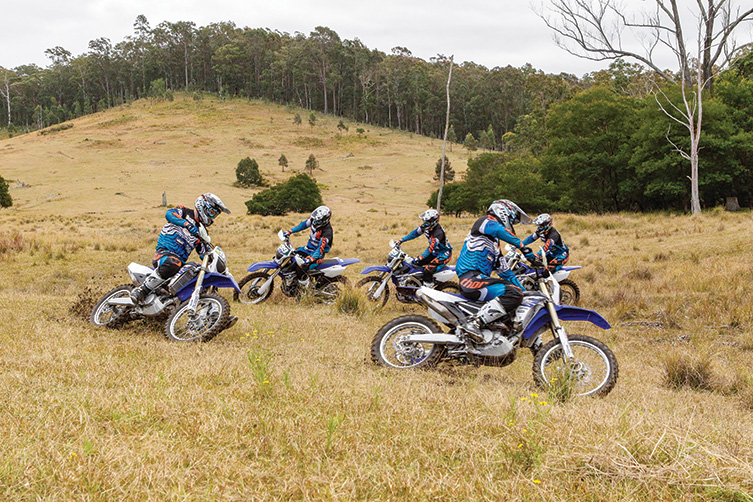
– Transition Time –
Once your braking is complete, it’s time to transition from standing to the seated position. It’s especially important to be smooth and controlled when moving into your seated position. You should be completely off the brakes, and slide onto the seat in one fluid motion. It’s critical to maintain control over the bike with the use of your legs, while your outside foot should instantly roll forward on the outside peg to create downward pressure – in turn, increasing traction.
By this time, you should be getting into the mid-point of your turn and slowly beginning to roll the throttle on. Patience is key on a flat corner where traction is at a premium because aggressive use of the throttle can cause the rear wheel to break traction and step out abruptly. Smooth throttle control will allow the bike to track in a straight line and drive most effectively.
– Patience –
As the day wears on and braking and acceleration bumps get deeper, patience becomes even more important in flat turns. Line selection also becomes more critical, as you seek to get out of the main line to avoid bumps and holes and find traction.
If following another rider, you should take a look at their lines closely to see if there is anywhere on the track you can improve your line selection – especially on the entry to flat corners, where large amounts of time can be made up if you can improve your braking or transition into the corner.
Patience also becomes important in staying upright through a flat turn. One of the most common mistakes I see at all levels of riding is the loss of the front-end on corner entry. Getting your braking done in a straight line is critical to corner set-up and minimising mistakes. Be patient on the entry to turns, ensuring you keep the bike planted through your weight on the footpegs.
On a rough flat turn, throttle control becomes even more important again. Using the gas in a smooth manner will ensure you maintain control of the bike through the mid-point of the turn, allowing you to crack the throttle open as you exit and turn your focus to the next section of the track.
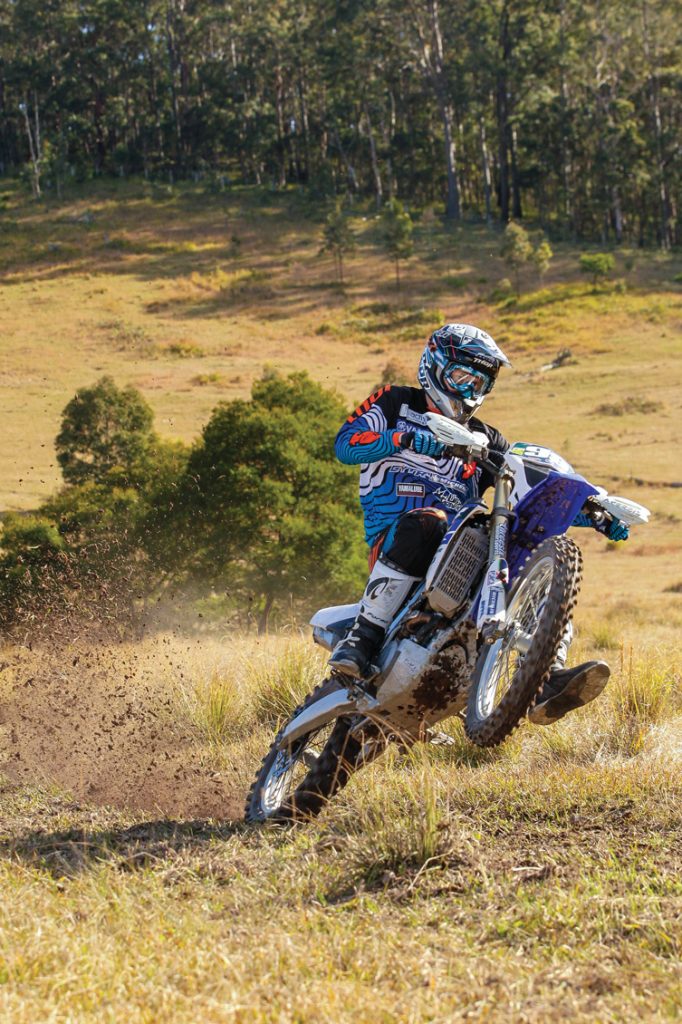
EXIT STRATEGY
– Power to the Ground –
By this point, the hard work should be done. With your braking complete and transition out of the way, you should be through the apex of the corner and ready to crack her open. It’s important to finish the corner off the same way you entered it – in a smooth, controlled manner. Be aggressive in getting your upper bodyweight forward to allow the rear-end to get the power to the ground, but maintaining the downward pressure through the footpegs remains critical for exits, especially as acceleration bumps form throughout the day. Your inside leg (the left leg in this instance) should be off the peg to aid balance, with your toes pointed in the direction you want to go. Your vision should be focused on the next obstacle or corner on the track, and the throttle should now be progressing to wide open as you exit the corner and get onto the straight.
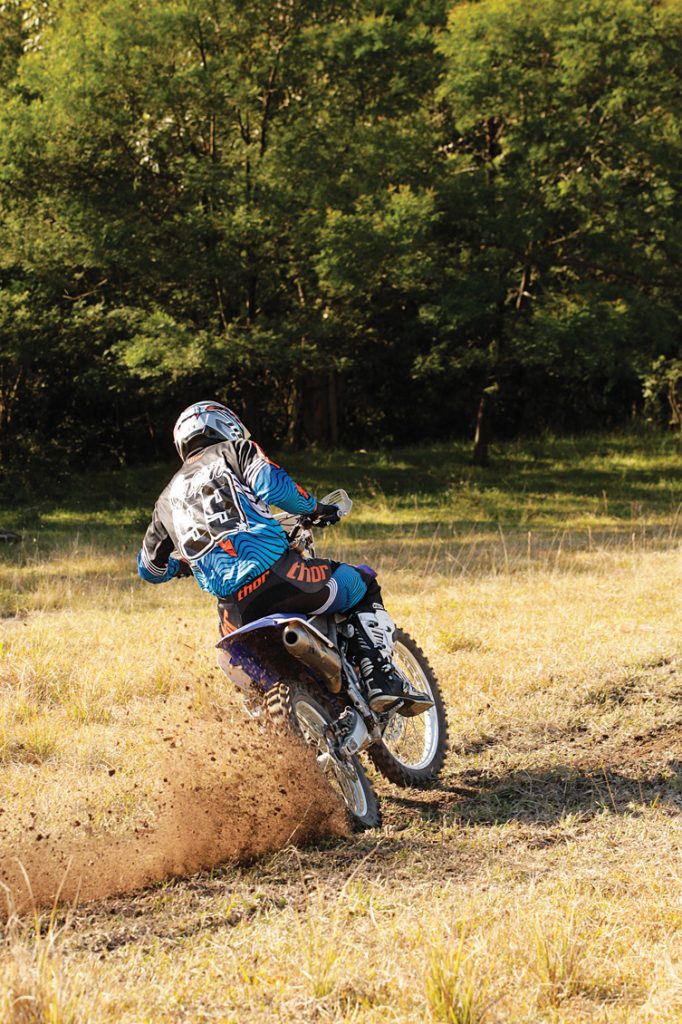
– Traction is Key –
Without a large berm or rut to help ‘lock’ your wheels in place and get the power to the ground, it’s all about the search for traction with flat corners. During the corner exit, there should be no thought of changing lines; you should have identified your line early and be aiming for that traction – whether it’s loamy dirt or the grassy edge of the track. If you have picked a wide, sweeping line, you should have maintained significant momentum and be able to roll the throttle on nicely as you transition into the straight. You should be gradually rolling the throttle on from the mid-point of your turn to full throttle by the time you hit the exit.
A sharper angle through the corner will mean you have to adopt more of a ‘point and shoot’ method. If you’ve found yourself in this situation, it’s important to maintain patience on the exit. The same rules apply – be controlled with your throttle use and turn your vision and focus to the next section of the track. And although your mind will now be focused on the next obstacle, it’s important to take note of terrain changes on each section of the track. If you spotted a better line as you exited the corner, make a mental note to give it a crack next lap.
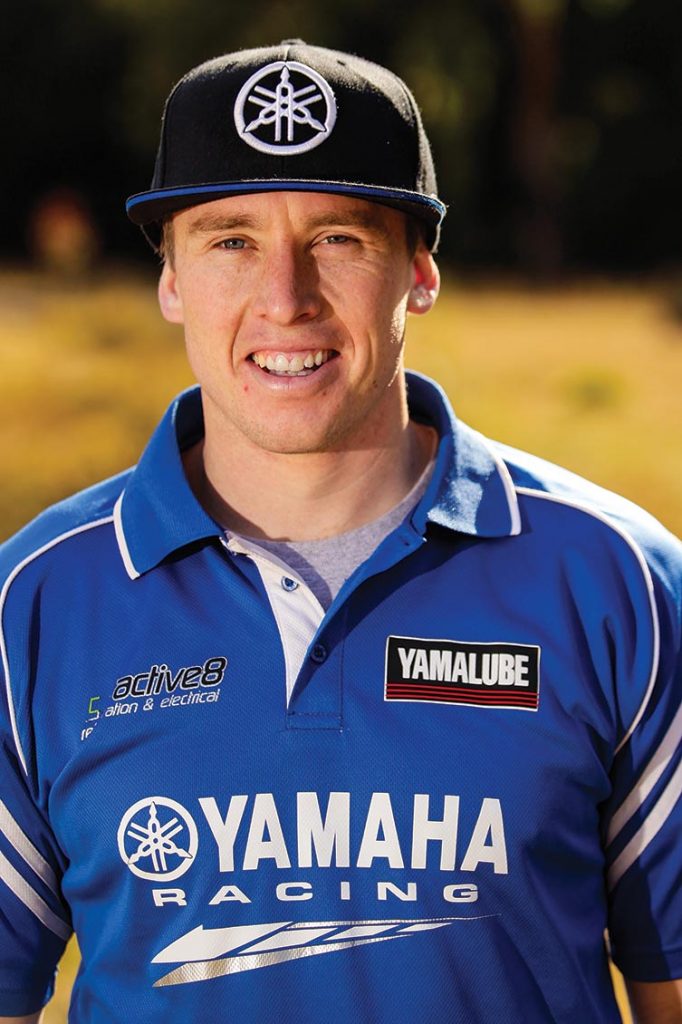
About The Rider:
In 2010, at the age of 19, the kid from soldiers Point on the northern NSW coast packed his bags and headed off to the UK to ride for Team TM Electraction in the enduro World Championship (EWC). He won the Junior class at the Greece round and, despite missing a few rounds, finished up seventh overall in EJ title chase. Since returning to oz, he’s won the Hattah Desert race, posted a pair of top-three overall Finke results, been a podium regular at the AORC – finally clinching the E1-class title just as we went to print – and finished second in the 2015 enduroX nationals. And given that he’s now running specialist coaching clinics for enduro and trailriders, the 25-year-old is well qualified to dish out expert advice on how to get around flat turns quickly and eficiently.
Related Content
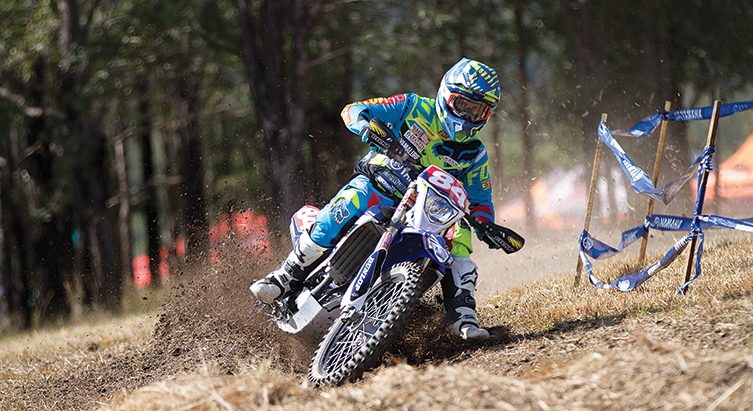
HOW-TO: ENDURO RACING
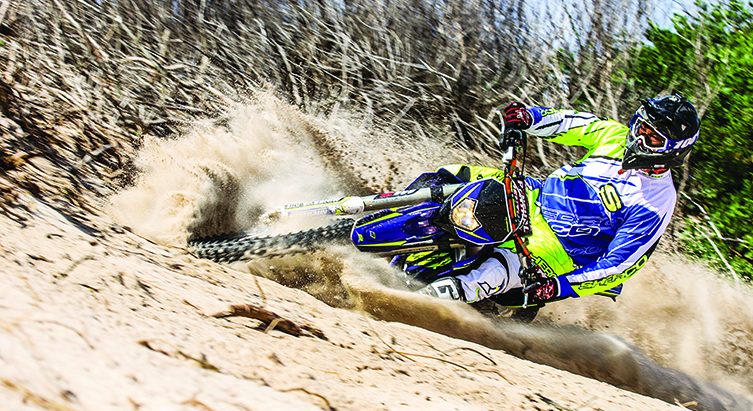
HOW-TO: RIDE SAND WITH MATT PHILLIPS
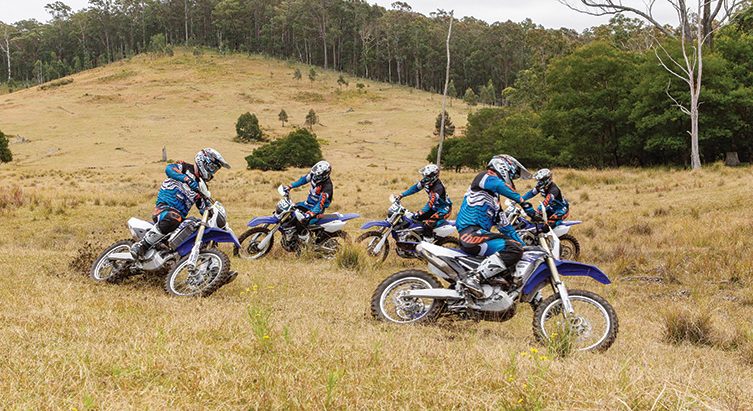







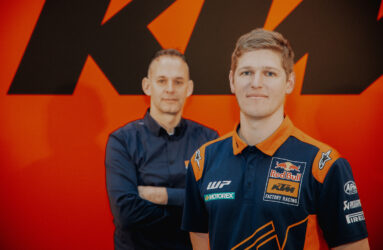
Be the first to comment...